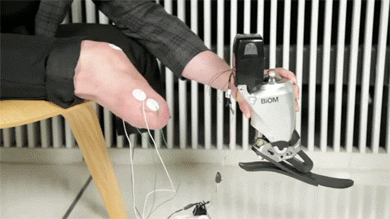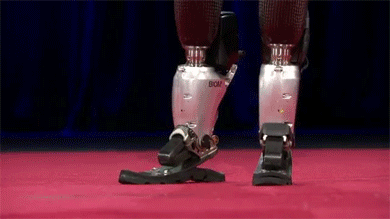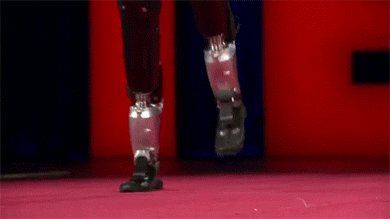Stubborn-turtle-blog




More Posts from Stubborn-turtle-blog and Others
prayer circle for elder scrolls 6


This awesome plane-train hybrid could revolutionize transportation, but not for another 50 years
Imagine a future where a plane lands at an airfield that doubles as a rail yard. The cabin — one of three that cling to the underbelly of the aircraft like a baby possum to its mother — detaches, is seamlessly transferred to a nearby train, and then continues its journey toward the city center. Your multi-seat trip (taxi-to-subway-to-airtrain) from home to hotel suddenly becomes a one-seat, hassle-free ride. That’s the aim of a consortium of Swiss researchers with the conceptual Clip-Air, a bold-looking plane-train hybrid that despite its high-minded possibilities, will probably never get made.
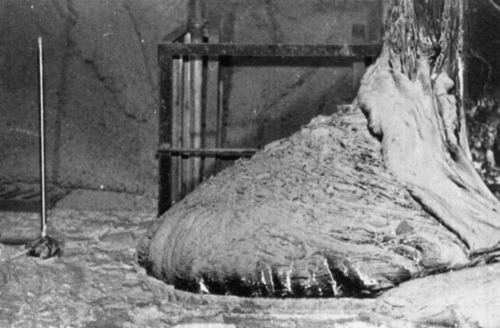
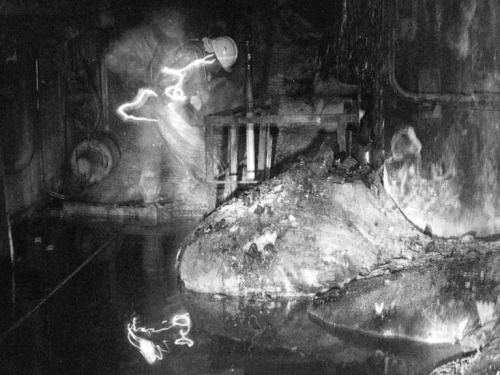
One of the most dangerous pictures ever taken - Elephant’s Foot, Chernobyl. This is a photo of a now dead man next the ‘Elephant’ Foot’ at the Chernobyl power plant.
The image distortions in the photo are created by intense level of radiation almost beyond comprehension. There is no way the person in this photo and the person photographing him could have survived for any more that a few years after being there, even if they quickly ran in, took the photos and ran out again. This photo would be impossible to take today as the rates of radioactive decay are even more extreme now due to a failed military experiment to bomb the reactor core with neuron absorbers. The foot is made up of a small percentage of uranium with the bulk mostly melted sand, concrete and other materials which the molten corium turns into a kind of lava flow. In recent years, it has destroyed a robot which tried to approach it, and the last photos were taken via a mirror mounted to a pole held at the other end of the corridor for a few seconds. It is almost certainly the most dangerous and unstable creation made by humans. These are the effects of exposure: 30 seconds of exposure - dizziness and fatigue a week later 2 minutes of exposure - cells begin to hemorrhage (ruptured blood vessels) 4 minutes - vomiting, diarrhea, and fever 300 seconds - two days to live

Horsehead Nebula // Barnard 33
The Black Death Is Older Than We Thought
A recent study analyzed DNA from the teeth of Bronze Age people who lived in Europe and Asia. It found evidence of plague infection, from the Yersinia pestis bacterium, dating to 6,000 years ago! What later became the Black Plague was, 6,000 years ago, spread only through contaminated food or human-to-human contact. It was later that a genetic mutation in the bacterium allowed them to survive in the guts of fleas – researchers estimate around the turn of the 1st century BCE.
The black death’s early co-existence with humans, and its ability to pass person-to-person, also suggests an interesting new avenue for forensic diagnosing. The yersinia pestis bacterium may have been responsible for early epidemics, such as the plague of Athens. Many early plagues are known to have passed person-to-person so scientists previously discounted yersinia pestis from the running. But proving which ancient plagues were really the Black Death in an earlier form is a subject for another study.

#Yes
Scientific Women You Haven’t Heard of (Yet): Louise Pearce

Louise Pearce is best known for her work that lead to a cure for sleeping sickness. Pearce traveled to what is now the Democratic Republic of the Congo to test the arsenic based cure, tryparsamide, in cooperation with a hospital in Léopoldville that was coping with an outbreak of sleeping sickness. This trip helped establish parameters for treatment (such as safe and optimum dosages) of sleeping sickness with tryparsamide. Pearce also used rabbit colonies to study syphilis and cancer over generations. Pearce was lesbian and a feminist and lived with Sara Josephine Baker and Ida A.R. Wylie. Pearce’s curriculum vitae is impressive and lists Standford University, Boston University and Johns Hopkins University as her alma maters.
Learn more: (x) (x) (x)
Previous Installments: Lynn Conway, Noella Marcellino, Tu Youyou
About the series: (x)
-
 atsa-space-and-sici-fi reblogged this · 1 month ago
atsa-space-and-sici-fi reblogged this · 1 month ago -
 sou-sou-sou liked this · 3 months ago
sou-sou-sou liked this · 3 months ago -
 thesishome liked this · 3 months ago
thesishome liked this · 3 months ago -
 luna-di liked this · 4 months ago
luna-di liked this · 4 months ago -
 psycholyze liked this · 4 months ago
psycholyze liked this · 4 months ago -
 jo-phoenix liked this · 4 months ago
jo-phoenix liked this · 4 months ago -
 dani-65 liked this · 5 months ago
dani-65 liked this · 5 months ago -
 milopawpins liked this · 5 months ago
milopawpins liked this · 5 months ago -
 who-ever-said-i-was-nice liked this · 5 months ago
who-ever-said-i-was-nice liked this · 5 months ago -
 purplepri liked this · 5 months ago
purplepri liked this · 5 months ago -
 just-your-ordinary-captain liked this · 5 months ago
just-your-ordinary-captain liked this · 5 months ago -
 rowinablx reblogged this · 5 months ago
rowinablx reblogged this · 5 months ago -
 rowinablx liked this · 5 months ago
rowinablx liked this · 5 months ago -
 sunkissedv0dka-blog reblogged this · 5 months ago
sunkissedv0dka-blog reblogged this · 5 months ago -
 socialistwh0r3 liked this · 6 months ago
socialistwh0r3 liked this · 6 months ago -
 anna8xin1 liked this · 6 months ago
anna8xin1 liked this · 6 months ago -
 annaxpdoa liked this · 6 months ago
annaxpdoa liked this · 6 months ago -
 anna6bmeg liked this · 6 months ago
anna6bmeg liked this · 6 months ago -
 luna9876 liked this · 6 months ago
luna9876 liked this · 6 months ago -
 annarm02d liked this · 6 months ago
annarm02d liked this · 6 months ago -
 annaoayin liked this · 6 months ago
annaoayin liked this · 6 months ago -
 fablenaught reblogged this · 6 months ago
fablenaught reblogged this · 6 months ago -
 papayaslasher liked this · 8 months ago
papayaslasher liked this · 8 months ago -
 unknownerrorsstuff reblogged this · 8 months ago
unknownerrorsstuff reblogged this · 8 months ago -
 thatsmygirl6612 reblogged this · 8 months ago
thatsmygirl6612 reblogged this · 8 months ago -
 y2ksnowglobe reblogged this · 8 months ago
y2ksnowglobe reblogged this · 8 months ago -
 deviruo liked this · 9 months ago
deviruo liked this · 9 months ago -
 a-curly-haired-girl liked this · 9 months ago
a-curly-haired-girl liked this · 9 months ago -
 nyoooomofdoom liked this · 9 months ago
nyoooomofdoom liked this · 9 months ago -
 shipping-the-world liked this · 9 months ago
shipping-the-world liked this · 9 months ago -
 acefaun liked this · 9 months ago
acefaun liked this · 9 months ago -
 redcotai liked this · 9 months ago
redcotai liked this · 9 months ago -
 theteeniestleaf reblogged this · 9 months ago
theteeniestleaf reblogged this · 9 months ago -
 scourgewasright reblogged this · 10 months ago
scourgewasright reblogged this · 10 months ago -
 alatoartsalot liked this · 10 months ago
alatoartsalot liked this · 10 months ago -
 the-sand-guardian liked this · 10 months ago
the-sand-guardian liked this · 10 months ago -
 sabbyvii liked this · 10 months ago
sabbyvii liked this · 10 months ago -
 thefirewas-blue reblogged this · 10 months ago
thefirewas-blue reblogged this · 10 months ago -
 onlymahbones liked this · 10 months ago
onlymahbones liked this · 10 months ago -
 hopefulaceofspace liked this · 10 months ago
hopefulaceofspace liked this · 10 months ago -
 jas-lil-blog reblogged this · 10 months ago
jas-lil-blog reblogged this · 10 months ago -
 jas27 liked this · 10 months ago
jas27 liked this · 10 months ago -
 magicpony75 reblogged this · 10 months ago
magicpony75 reblogged this · 10 months ago -
 moondustpockets reblogged this · 10 months ago
moondustpockets reblogged this · 10 months ago -
 magicpony75 liked this · 10 months ago
magicpony75 liked this · 10 months ago -
 dangerouslyclassyhottub liked this · 10 months ago
dangerouslyclassyhottub liked this · 10 months ago -
 raimagnolia reblogged this · 10 months ago
raimagnolia reblogged this · 10 months ago -
 c45510p31a reblogged this · 10 months ago
c45510p31a reblogged this · 10 months ago -
 c45510p31a liked this · 10 months ago
c45510p31a liked this · 10 months ago
Gaming, Science, History, Feminism, and all other manners of geekery. Also a lot of dance
243 posts
